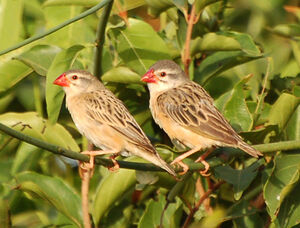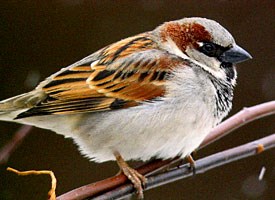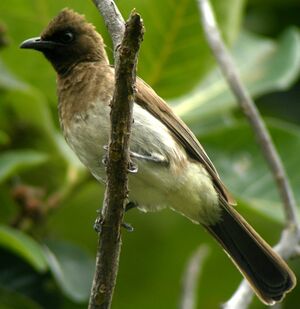AGRICULTURAL
BIRD PEST
The agricultural bird
pests are all bird species which attacks and affects the human crops either
severely or at tolerant level. There are several bird pests which have been found
in Tanzania and other countries in the world.
Most of the societies
which are found at the Lake Zone regions of Tanzania (Tabora, Shinyanga and
Mwanza regions) like Sukuma (Mwanza and Shinyanga), Nyamwezi (Tabora), Jita and
Kerewe (Mwanza) are characterized by small scale agricultural system. These
societies mostly perform the subsistence farming, and the most cultivated crops
includes maize, rice, beans, millets, sorghum, groundnuts, cassava, and even
fruits like oranges, mango, and pawpaw.
There are several
agricultural bird pests which are found in Lake Zone regions in Tanzania which
attacks the cereals, seeds and even the leaves of many agricultural plants like
maize, rice, millet, sorghum, and even variety of fruits.
The following seven
birds are the most common and most destructive in Lake Zone in Tanzania; Red billed quelea, Scaly francolin,
Speke’s weavers, House sparrow, Speckled Mouse bird, Common bulbul, Duck and
Guinea fowls.
1: RED BILLED
QUELEA,
Classification
Common name; Red billed Quelea
Species name; Quelea quelea
There are several
methods which have been used to minimize the effects of the Quelea attacking.
These includes the traditional ways and the modern means.
Traditional means
includes
·
Chasing them physically when they come
to attack either by throwing the stones or making noises.
·
Use of cassette tape threads, tying them
around the field which produces the scary noises to birds when they are blown
by wind.
·
Use of warning flags to scary them.
·
Use of scary toys which resembles like a
man.
·
Also the use of catapults.
Modern ways includes
·
Chemical means, use of pesticides.
|
|
|
|
2.
SCALY FLANCOLIN.
Classification
Common name; Scaly francolin
Species name; Pternistis
squamatus
There
are several traditional methods which have been used to minimize the effects of
the scaly francolin attacking.
Traditional means
includes
·
Chasing them from farms physically
sometimes by using dogs.
·
Also the use of catapults.
3.
SPEKE’S WEAVERS
Classification
Common name; Speke’s
weavers
Scientific name; Ploceus spekei
The methods which have
been used to minimize the effects of these weaver attacking includes the traditional
ways and the modern means.
Traditional means
includes
·
Chasing them physically when they come
to attack either by throwing the stones or making noises.
·
Use of tape thread, tying them around
the field which produces the scary noises to birds when they are blown by wind.
·
Use of warning flags to scary them.
·
Use of scary toys which resembles like a
man.
·
Also the use of catapults.
Modern ways includes
·
Chemical means, use of pesticides.
4. HOUSE SPARROW
Classification
Common name; house sparrow
Scientific name; Passer domestica
Local ways of reducing
the effects includes
·
Chasing them physically when they come
to attack either by throwing the stones or making noises.
·
Also the use of catapults.
No any modern method is
identified to reduce the damage
5. SPECKLED
MOUSE BIRD
Classification
Common name; speckled mouse bird
Scientific name; Colius striatus
Local ways of reducing
the effects includes
·
Chasing them physically when they come
to attack either by throwing the stones or making noises.
·
Also the use of catapults.
No any modern method is
identified to reduce the damage.
6. COMMON BULBUL
Classification
Common name; Common bulbul
Scientific name; Pycnonotus barbatus
Local name;
Magulye (Jita) or Gwengere (in Sukuma) in Mwanza
| Crops affected by the species includes fruits like pawpaw, mangoes and tomatoes, Grains like maize, rice, sorghum and millets, as well as insects. |
Local ways of reducing
the effects includes
·
Chasing them physically when they come
to attack either by throwing the stones or making noises.
·
Also the use of catapults.
No any modern method is
identified to reduce the damage.
7. DOMESTIC DUCKS AND HELMETED GUINEA FOWLS
|
|
|
|
Common names; Ducks and Helmeted guinea fowls
Scientific names; Ducks (Anas spp), Helmeted guinea fowl (Numida meleagris).
Local
names; Ducks (Bata) and
helmeted guinea fowl (Kanga) all are in Swahili language.
ü Seedlings
are damaged during the rainy season soon after germination begins (from
September - January).
ü Cereals
are highly damaged during the harvesting season but the seeds may be continuously
damaged even after the harvesting period for instance when the seeds are being
dried, the level of damage is high in February to July.
ü The
leaves are destructed through out of the year.
Local ways of reducing
the effects includes
·
Chasing them physically when they come
to attack either by throwing the stones or making noises.
·
Also the use of catapults.
No any modern method is
identified to reduce the damage.








No comments:
Post a Comment